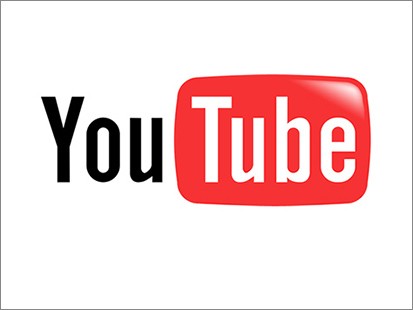It used to be that we defined who a celebrity was strictly by what movies or television shows they were in. 30 years ago, in 1985, America and the World’s television viewing habits were formed by the act of sitting in front of a box that sat in living rooms or bed rooms, or whatever room, and watching what was presented to us. Then, Cable Television was new, and ESPN was something known only to a handful of people; the 500 channel option was just starting.
Then the advent of the personal computer and then The Internet and the website brought with it the desire to upload photos, and eventually a moving picture. Then came the idea of uploading moving picture faster, something that only happened as the technology to move websites, photos, and videos onto the Internet faster developed. And as the number of computers profilerated, and dial up connections gave way to broadband, entrepreneurs started to make platforms where we could upload what we now call videos faster. Soon, companies like Blip.tv and YouTube were established, and the then-new startup company industry, fueled by investors large and small looking to get a piece of the tech action, laid the foundation for a dramatic change in how we get entertained.
The smartphone, established with the iPhone in 2007, and just two years after the founding of YouTube, made it possible to take our web viewing habits whereever we went. The stage was set for the birth of what we now call Internet celebrities, online marketing, and mobile marketing. Then, the next stage in the development of smartphones saw additions of cameras and camcorders. And the use of those devices was so widespread that small camcorders like the famed Flip Video Camera were discontinued by manufacturers who saw the hand-writing on the wall: smartphones were becoming the standard tool for the creation of what we now call content. Videos seen by thousands and millions of people , what we call viral videos, are now so common that they have become new items themselves.
All of this has led to a dramatic change in who a celebrity is. Today, that person is just as likely to be someone who many saw in a local YouTube video, as it is a person who starred in a movie. And that fact has taken a lot of money out of the pockets of traditional celebrities, and so much so that opportunities for actors and actresses to make high dollar residual income from television shows have declined, even as the number of shows has increased and because of that dynamic. Veteran actor Victor McCay said as much in my 2011 interview at Comic Con San Diego:
In “Toward a New Definition of Celebrity”, Neil Gabler says that the celebrity is “the principle source of motive power in putting across ideas of every kind — social, political, aesthetic, moral.” But if that’s the case, the sheer number of people who do that has risen to astronomically high levels – and so great and varied are their numbers that many are known only to people in certain areas of study, cities or regions, industries, or walks of life.
And some are virtual in their way: digital numbers imply we should know them, but in reality many of us do not.
Consider the development of something we call The YouTube Star in Pew Die Pie. This game video-blogger has over 30 million YouTube subscribers, yet many people, if one asks them on the street, have never heard of him. That’s what happens when such numbers are, in some cases, pushed up artificially via various means. YouTube, faced with that problem, came to a fork in its marketing road: either reduce those numbers of ‘fake subscrbers” (something that was becoming harder to do with the emergence of new methods of development of them) or go on a publicity push to get those same stars to be seen on traditional media. Thus, the fake celebrity becomes the real celebrity.
This ongoing development is a new one, but has already altered who we talk about. For example Bethany Mota, a 19 year old YouTuber with 7 million subscribers, was on Dancing With The Stars in 2014 – a first for any Internet celebrity. All of this has caused more television shows featuring YouTubers to be in development – and so now, YouTube is mainstream. But with it, so is the ability to manufacture celebrity.
What marketers don’t get in full, but are coming around to seeing, is that the best way to push a brand is to use YouTube influncers together with websites and social media, to, whole cloth, form demand for a brand. While general YouTube stars may not push sales for any brand that has an ad up next to their video, get that same person to talk about a brand and the picture changes. The brand’s sales are impacted – positively if the talk is good and the reverse if its’ not.
As YouTube celebrates it’s 10th year, it’s that dynamic of being able to create and pay people who may have not been known the year before that will drive its future growth. Where the number of YouTubers making money off their videos was just around 10,000 in 2008, it’s well over one million today. Now, with smartphones in wide use and our eyeballs turned to look at YouTube on them, rather than television, and videos being made and uploaded with them, everyone is just one viral video away from being known.
And selling soap.
Stay tuned.
Zennie Abraham | Zennie Abraham or “Zennie62” is the founder of Zennie62Media which consists of zennie62blog.com and a multimedia blog news aggregator and video network, and 78-blog network, with social media and content development services and consulting. Zennie is a pioneer video blogger, YouTube Partner, social media practitioner, game developer, and pundit. Note: news aggregator content does not reflect the personal views of Mr. Abraham.
